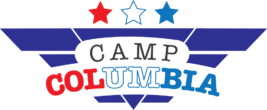The Old Fellow’s War. Edmund Nyst 2007
These are abstracts from the book as researched by Ruby Todorovski for the Queensland University Archaeological Research Project Camp Columbia Wacol.
P132 Born 1927. Father was Dutch consul in Marseilles. Mother was American. Lived in Marseilles until after German occupation in 1942. Joined the resistance and in September 1944 ordered to “make my way to the Allied Forces in the South of France and join the Dutch Army” (p93). October 1944 sent to England (p114). November 1944 sent to Australia (p122).
p134: Eventually we came to our final stop. To us it was meant to be Brisbane. It was a siding to the side of a very small open shelter. From where I was, I could not see the name of it, although it must have been written somewhere. A few trucks were waiting for us Dutch. The other soldiers remained on the train. We boarded the trucks and looked in dismay at each other. Brisbane somehow appeared to be quite different from Sydney. We drove from what I now think must have been somewhere near Coopers Plains to Wacol Station. There we crossed another railway line and straight after that, on the right-hand side was Camp Columbia. It was mid-January 1945. Columbia was a Netherlands East Indies Army Headquarters and sorting camp. The camp contained native soldiers from the Dutch East Indies and white European Dutchmen in the KNIL. From there Dutch and native soldiers were sent to different units stationed either in Australia, New Guinea or some other islands in the Pacific.
We got off the trucks and were assigned to very spacious barracks. We were given the rest of the day off. We showered and shaved and went for lunch. The camp had two messes, one where European food was dished out and another ….
p135: where the Indians, as the natives of the Dutch East Indies were called, were served their own type of food…
p136: That evening some of us managed to get a lift into town. There were trucks going to town every evening and coming back at midnight. The trucks went as far as Woolloongabba and stopped there, about twelve miles away …. The next day we were told that all the trains from Wacol went into Brisbane. That evening instead of going by truck a few of the boys and I went to the Railway Station….
p137: When we got there over a thousand soldiers were waiting for the train. They were mostly Americans from a large army camp situated right across the main road from us. … One morning a Sergeant Major came into our barracks and called out some of our names and where we were assigned to. I was to go to Camp Victory at Casino. …. Those of us assigned to Camp Victory were to be taken there next day by truck.
p138: Camp Victory was a huge big tent camp. There were a few barracks for offices and amenities but the men lived in tents. … The camp held the First Battalion of the Netherlands East Indies Infantry. It was made up mainly of what we now call Indonesians. They were all professional soldiers from the Nederlandsch Indisch Leger which had been the army in the Dutch East Indies before the Japanese invasion. They had last fought in Timor with the Australian before being evacuated to Australia in 1942. Now they were used in different theatres of war under General MacArthur.
p143: The following day I was ordered to report to H.Q. again. This time I was told where I was being sent to: Hollandia, North New Guinea. I was also given an envelope that I was to hand over to the Commanding Officer of the Dutch contingent there.
In the afternoon I was taken by jeep to Archerfield aerodrome. There, amongst others was based the 18th Squadron KNIL Air Transport. (Ed. correct name 18 NEI Squadron RAAF. There was a separate Dutch Transport Squadron).
Edmund Nyst 2007 The Old Fellow’s War. New Holland: Chatsworth, NSW.
See also:
